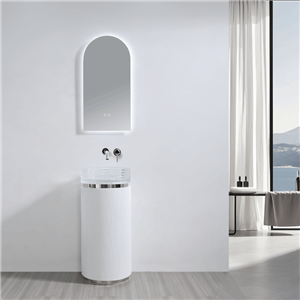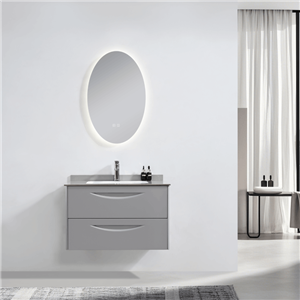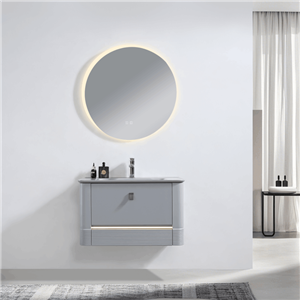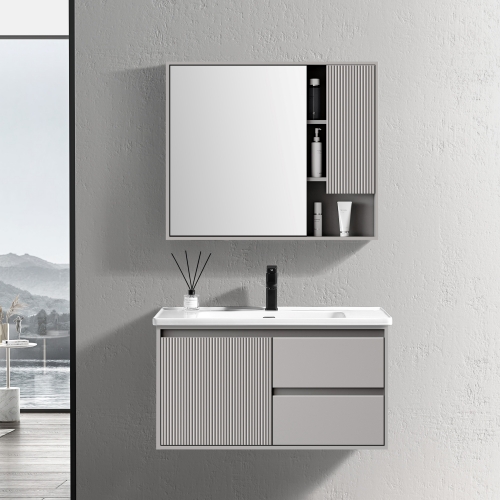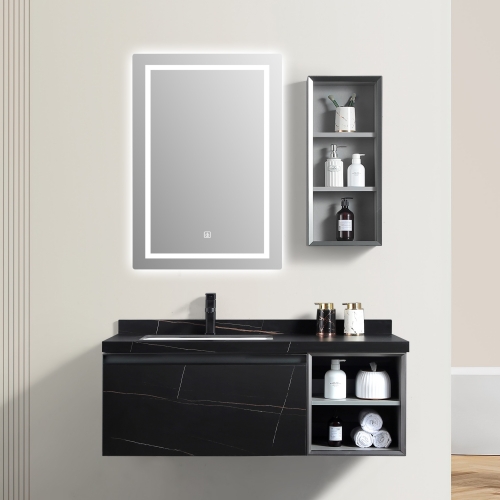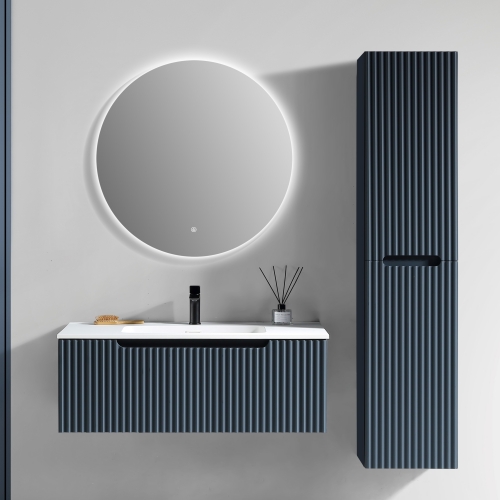Floating Bathroom Vanity vs. Traditional Vanity: Which is Better?
Why Your Bathroom Needs the Perfect Floating Bathroom Vanity
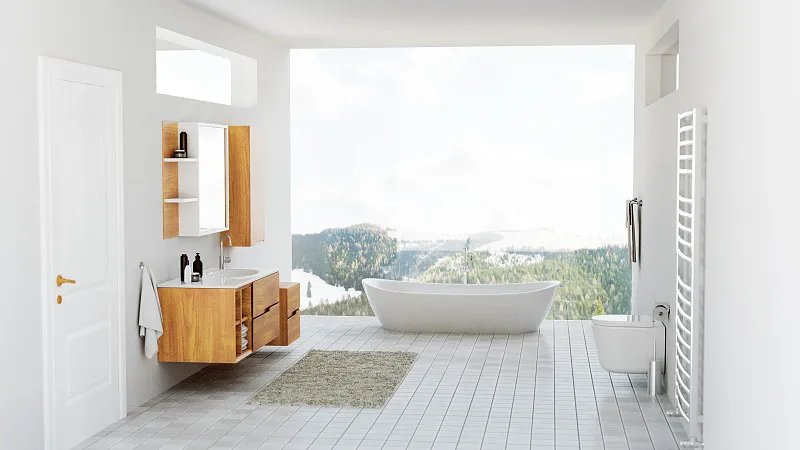 |
Why the Right Floating Bathroom Vanity Matters
A bathroom vanity is crucial because it influences both how your bathroom looks and how well it functions. It's where you organize your essentials and prepare yourself for the day. The right vanity can bring a bathroom together, giving it a finished look while offering valuable storage.
Floating Bathroom Vanity vs. Traditional Bathroom Vanity
Choosing between a floating bathroom vanity or a traditional one can be tough because each type has its own appeal. A floating bathroom vanity is mounted on the wall, which makes it look modern and airy while freeing up space underneath for easy cleaning or extra storage. On the other hand, a traditional vanity often reaches the floor, giving you lots of storage space and offering a more classic design that blends with many styles.
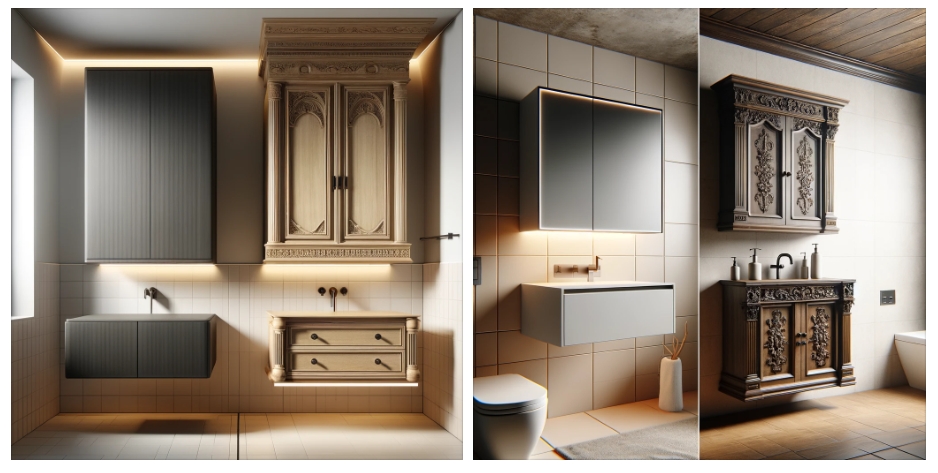 |
What This Blog Will Help With
This article will walk you through the key differences between floating and traditional vanities, highlighting their styles, practical features, and installation factors. Understanding these points will help you choose which option fits your bathroom layout and your personal taste best.
What is a Floating Bathroom Vanity?
A floating bathroom vanity is mounted to the wall, creating an airy and open look by leaving space underneath. Unlike traditional vanities that rest on the floor, a floating vanity is suspended, providing a fresh, modern feel while also making cleaning easier. This setup brings a distinctive, contemporary touch to any bathroom, making it a popular choice among modern homeowners.
Ayala Floating Bathroom Vanity For Reference
Benefits of Floating Bathroom Vanities:
Modern Style: The floating vanity bathroom trend is loved for its sleek and contemporary look. By being wall-mounted, it gives an uncluttered appearance, instantly updating your bathroom’s style. Floating bathroom vanities are versatile and fit both minimalist and bold designs.
Space-Saving Design: Without a bulky base or storage unit touching the floor, a floating bathroom vanity makes your bathroom appear larger. This design is perfect for smaller bathrooms where maximizing visual space matters or for larger bathrooms that want to emphasize a more open, spacious feel.
Easy Maintenance and Cleaning: The open space beneath a floating vanity makes it simpler to clean the floor underneath. Sweeping and mopping become easier since there are no awkward corners or bulky bases, helping you keep your bathroom spotless with less effort.
Popular Materials and Finishes:
Materials: Floating bathroom vanities are made from various materials to suit different tastes. Natural wood is favored for its warmth, while metal provides an industrial vibe. Glass, laminate, and PVC are also used, allowing homeowners to select based on their aesthetic and budget.
Finishes: Popular finishes include high-gloss paint for a modern touch, stained wood for natural warmth, and matte surfaces for a subtle, sophisticated look. Countertops can be made of natural stone, quartz, or solid surface materials, providing durable and stylish surfaces to complete your vanity.
By offering a combination of style and practicality, a floating vanity for the bathroom is ideal for those seeking contemporary design, space-saving features, and easy maintenance.
What is a Traditional Vanity?
A traditional vanity is a bathroom fixture that sits directly on the floor and often extends all the way to the ground. This style of vanity is characterized by its sturdy, classic design and offers a timeless look that complements various bathroom decors. Traditional vanities typically come with ample storage, including cabinets and drawers that help keep bathroom essentials organized and out of sight.
Benefits of Traditional Vanities:
Ample Storage: One of the major advantages of traditional vanities is their generous storage capacity. With a variety of drawers, shelves, and cabinets, these vanities make it easy to store towels, toiletries, cleaning supplies, and other bathroom necessities, keeping everything neatly tucked away.
Classic Design: Traditional vanities are known for their rich, classic aesthetic that adds a sense of elegance and comfort to any bathroom. They often feature intricate designs, such as moldings and wood carvings, which enhance the overall decor and add a luxurious feel.
Variety of Materials and Styles: Traditional vanities are available in a wide range of materials, including solid wood, MDF, and more, each offering durability and a unique look. They also come in various styles, from ornate Victorian to simpler colonial designs, providing options for every taste.
Popular Materials and Finishes:
Materials: Most traditional vanities are made from solid wood, known for its durability and classic appeal. Other materials like MDF (Medium Density Fiberboard) are also popular due to their cost-effectiveness and versatility.
Finishes: Traditional vanities often sport stained or painted finishes to enhance their intricate designs. Popular finishes include dark woods like mahogany or cherry, which offer a rich, warm tone, or painted finishes in whites or creams for a lighter, more airy feel.
Traditional vanities are a solid choice for those looking to bring a touch of timeless elegance to their bathroom while benefiting from practical storage solutions. Their robust design and variety of styling options make them a reliable and attractive option for any bathroom setup.
Comparing Floating and Traditional Vanities:
Style and Aesthetics:
A floating vanity bathroom setup provides a modern, minimalist look with its clean lines and wall-mounted design. It creates an open, airy feel by leaving the floor visible beneath. This can make a small bathroom appear more spacious and lends a contemporary flair to larger spaces.
A traditional vanity, however, brings a classic elegance with its solid base and floor-length cabinets. Often adorned with detailed woodwork and moldings, traditional vanities add sophistication and warmth to the bathroom, giving it a cozy and timeless appearance.
Practicality and Space:
When it comes to space, a floating bathroom vanity excels in maximizing floor space by leaving the area underneath clear. This is ideal for small bathrooms or powder rooms where every inch matters. Traditional vanities, though, are the champions of storage, with plenty of cabinets, drawers, and shelves for stashing toiletries, towels, and cleaning supplies.
Maintenance and Cleaning:
A floating bathroom vanity’s open floor space makes cleaning underneath a breeze. You can quickly sweep or mop the area without worrying about dust buildup in awkward corners. Traditional vanities, with their floor-mounted bases, may collect dust and dirt around the edges and in corners, requiring a bit more effort to maintain cleanliness.
Installation and Costs:
Installing a floating vanity requires secure wall mounting, which can be more labor-intensive and may need additional reinforcement for support. This can increase installation costs, especially if wall repairs are necessary. Traditional vanities are simpler to install, as they rest directly on the floor, reducing the need for complicated wall work.
In terms of overall cost, both floating and traditional vanities vary greatly depending on materials, finishes, and design complexity. Floating vanities can sometimes be pricier due to their modern style and installation requirements, while traditional vanities may offer more affordable options with simpler designs.
Choosing between a floating or traditional vanity ultimately depends on your bathroom's size, style preferences, and storage needs.
Choosing the Right Vanity for Your Bathroom:
Bathroom Size and Layout:
The size and layout of your bathroom are crucial in determining which type of vanity suits your needs. If you have a small bathroom, a floating vanity bathroom setup can help save valuable floor space and make the room feel less cramped. However, in a larger bathroom where storage is a priority, a traditional vanity with ample cabinets and drawers might be a better fit.
Design Theme and Personal Preference:
Your bathroom’s overall design theme and your personal preferences play a big role in the decision. If you prefer a contemporary look with sleek lines and minimalistic charm, a floating vanity will match your aesthetic. However, if you're drawn to more classic designs with intricate details and a cozy feel, a traditional vanity is the way to go.
Budget Constraints and Installation Complexity:
Consider your budget when choosing between the two vanity types. Floating vanities often require wall reinforcement and professional installation, which can increase costs. Traditional vanities are typically easier to install, as they rest directly on the floor, and may come with fewer installation expenses. Also, factor in the cost of the materials, finishes, and any additional features, such as built-in sinks or lighting.
Lifestyle Considerations:
Think about your lifestyle and daily habits. A floating bathroom vanity’s open floor space may make cleaning easier and could be perfect for minimalist living. However, a traditional vanity might be better if you need plenty of storage space for your family's toiletries, towels, and other bathroom essentials.
Future Renovations and Resale Value:
If you're considering future renovations or selling your home, think about the appeal of each vanity type to potential buyers. A floating bathroom vanity offers a modern look that may attract younger buyers, while a traditional vanity's timeless style could appeal to those who prefer a classic bathroom design.
By considering these factors, you can make a more informed decision about whether a floating or traditional vanity best suits your bathroom's size, style, and functionality needs.
Find 2024 modern floating bathroom cabinet design

